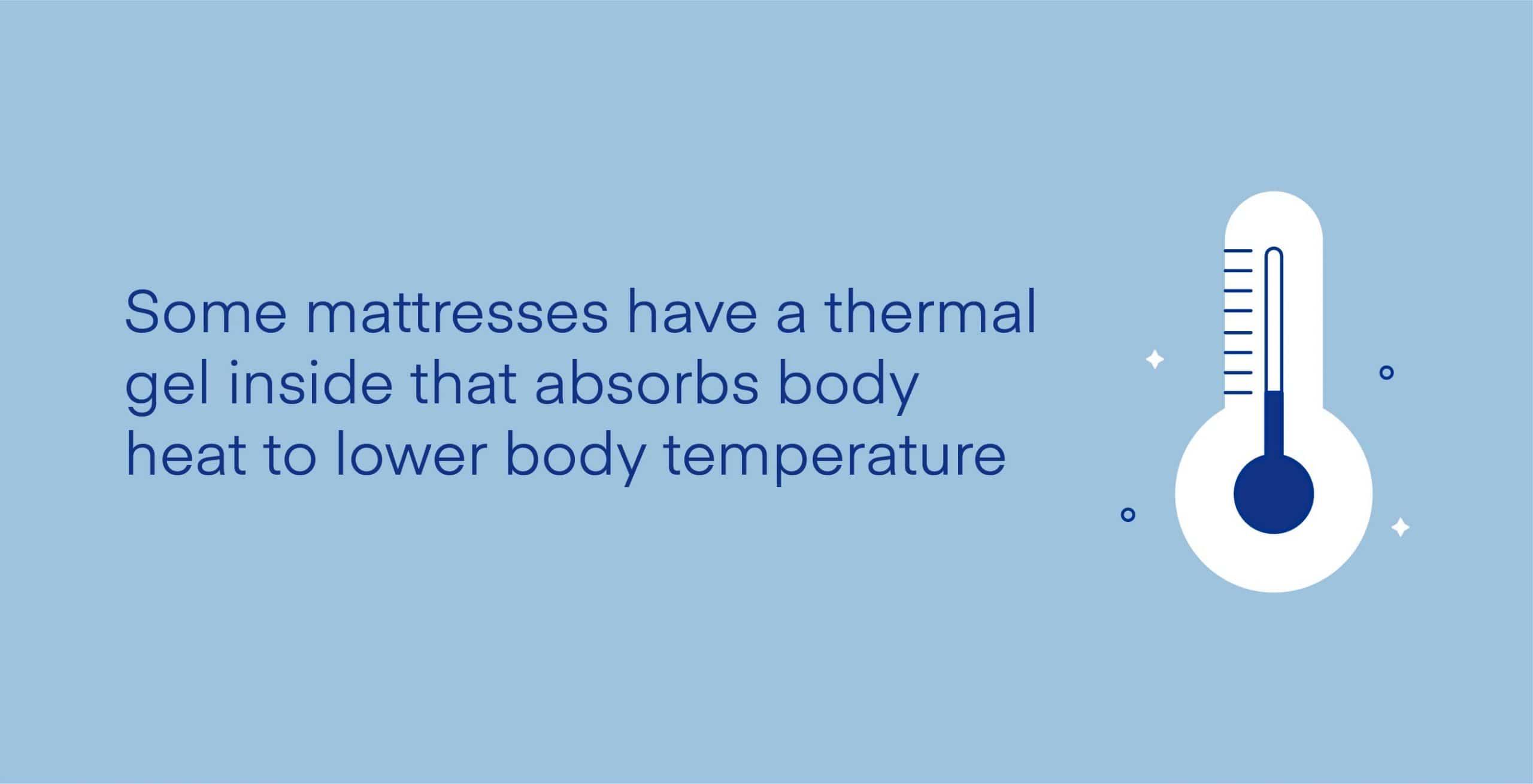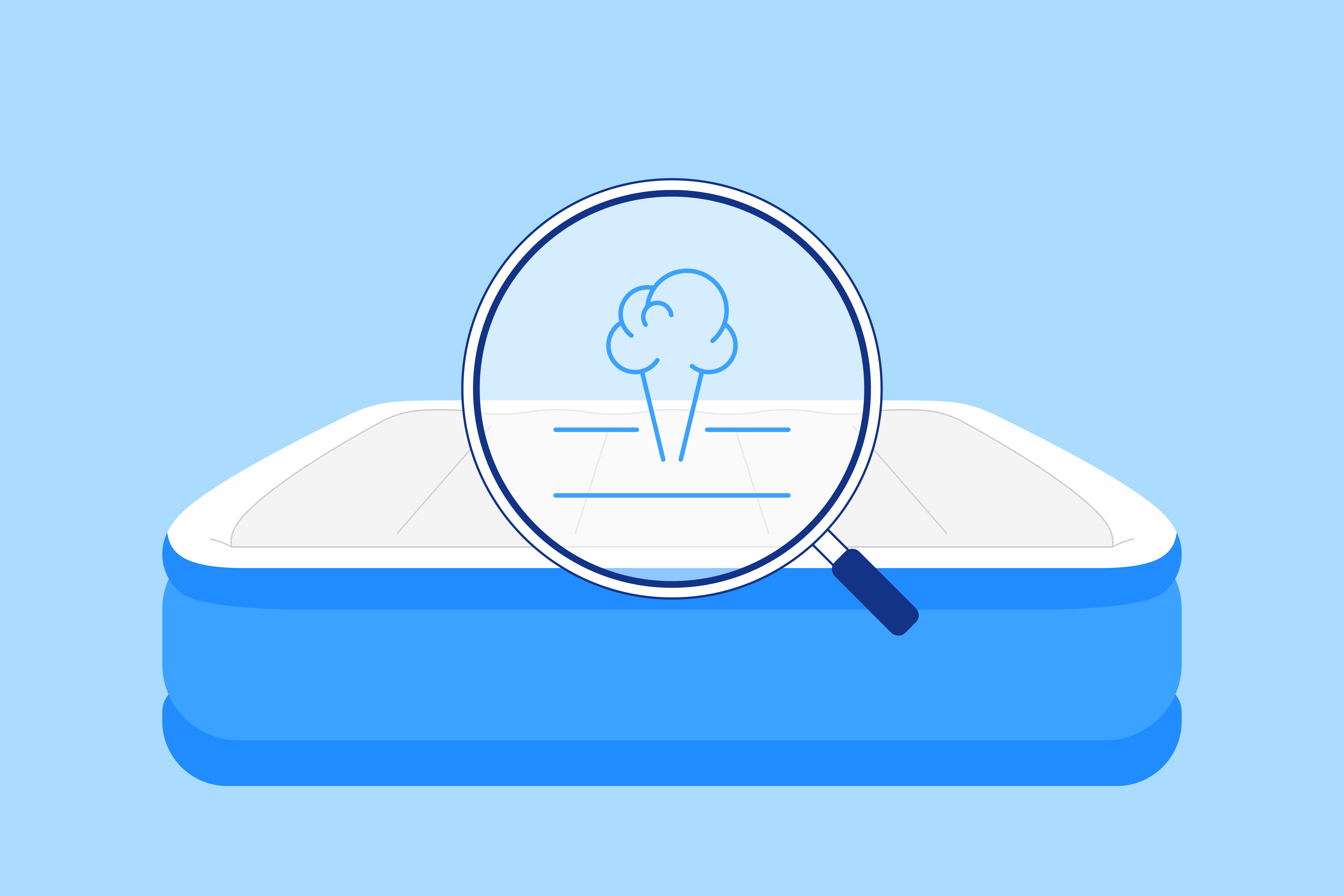Gel memory foam beds may sound fancy due to the presence of gel, but in essence, they have the same feel as traditional memory foam—except they’re more cooling.
While memory foam has been popular since the 90s, gel memory foam mattresses were first manufactured in 2006 with the aim to reduce heat retention, a drawback of traditional memory foam.
What is Memory Foam?
Memory foam is made by treating polyurethane foam with chemicals to increase its density and viscosity. Memory foam, also known as viscoelastic foam, conforms to your body, providing pressure-point relief. Memory foam responds to heat and pressure, molding to your body and providing you with cradling comfort.
Memory foam mattresses gained in popularity through their temperature and pressure-sensitivity. These mattresses conform to your body’s shape and provide the right cushion and support.
Memory foam has been on the market since the 90s and has evolved with time to beat its one disadvantage—heat retention. Though popular for its body-conforming and pressure-relieving features, traditional memory foam mattresses, at first, had a closed-cell structure which led to trapped body heat warming up the mattress faster.
Manufacturers altered memory foam into an open-cell structure by injecting air into the material. Nowadays the majority of memory foam mattresses are open-cell, designed to improve airflow and enhance breathability. The open-cell structure does not trap heat and sleeps cooler, while still maintaining memory foam’s body-conforming and pressure-relieving properties. Another temperature regulating foam, gel memory foam, was introduced in the mattress market as another way to tackle traditional memory foam’s heat retention.
What is Gel Memory Foam?

Gel memory foam mattresses are made by either adding gel beads (capsules filled with gel) to memory foam, swirling liquid gel into memory foam, or adding gel on top of the comfort layer. Cooling gel helps in dissipating heat, allowing you to sleep cool while retaining memory foam’s original body-conforming and pressure-relieving features.
What goes into the cooling gel is a closely guarded secret by mattress manufacturers. Some mattresses have a thermal gel inside that absorbs body heat to lower body temperature, while others use chemicals known as “phase-changing materials” or “PCM”—they start out solid at room temperature and change into liquid from body heat. There are some complaints that gel memory foam’s cooling effect may be temporary because once the PCM changes state from solid to liquid, the heat remains trapped in the mattress.
Some gel memory foam beds may have better cooling abilities than others. The performance of gel memory foam also depends on the structure of the other mattress layers and how hot the sleeper gets at night. Gel memory foam in a hybrid performs better than in an all-foam mattress because the layer of coils in the hybrid enhances the mattresses’ breathability. In all-foam models, factors like the mattresses’ cover material, breathability, and heat affect the gel memory foam layer’s effectiveness.
Other Gel-Infused Bedding Accessories
Memory foam quality, number of layers, mattress materials, and mattress size determine its price and could make a gel memory foam mattress more expensive than a traditional memory foam bed. If you don’t want to invest in a gel memory foam bed but have the inclination to try it out without spending much, try using gel-infused accessories like mattress pads and toppers.
Gel-Infused Mattress Toppers
Mattress toppers add an extra layer to your bed to adjust its firmness or softness. Gel-infused toppers are usually 2 to 4 inches deep and serve as a good option to try out how gel memory foam may feel.
Gel-Infused Mattress Pads
Mattress pads are usually a thinner version of mattress toppers. Both toppers and pads are used as a top layer of the bed to adjust its firmness or softness.
Other Cooling Variations to Memory Foam Mattresses
Mattress manufacturers have devised other mechanisms to keep your memory foam bed cool and provide you with an optimal sleeping experience. Factors like the mattresses’ structural design, additives, plant-based substitutes, and cover material also determine coolness.
Structural Design of Mattress
Some mattresses are designed with convoluted air channels which improve airflow and enhance breathability. These channels either run from top to bottom or form a zoned system to improve ventilation in certain areas where airflow is needed most.
Additives to Mattress
Additives like graphite and copper are good heat conductors and enhance a mattress’s coolness, dissipating heat away and letting you sleep cool through the night.
Plant-Based Substitutes
Substituting petroleum with certain plant-based oils produces a breathable, more responsive memory foam to keep sleepers cool. Plant-based oils are known to be cooler than synthetic petrochemicals.
Cover Material
Some high-quality mattresses may have innovative materials on their cover like FDA-determined Celliant® which transforms body heat into energy and may help you sleep cool through the night.
Amerisleep Memory Foam Mattresses
All of our memory foam mattresses rely on plant-based memory foam, known as Bio-Pur® foam. The production process for our unique memory foam substitutes some of the traditional chemicals with plant oils. This creates a memory foam mattress that is more breathable and responsive than traditional memory foam.
Quick Guide: A 30-Second Summary
| Best Overall Mattress | Amerisleep AS3 |
| Best Mattress for Back Pain | Amerisleep AS2 |
| Best Firm Mattress | Amerisleep AS1 |
| Best Mattress for Side Sleepers | Amerisleep AS4 |
| Best Soft Mattress | Amerisleep AS5 |
Difference Between Memory Foam and Gel Memory Foam
Memory foam and gel memory foam mattresses have more similarities than differences. The materials used in making them are the same, except for the extra gel in the gel memory foam.
Similarities
- They both are body contouring and provide pressure relief, making them a good option for those looking for cushion and support balance.
- Both are good for couples because these beds limit motion caused by tossing and turning.
- Both are available in varying degrees of firmness suiting side, back, and stomach sleepers.
- They are both good options for those with back pain because their body-conforming properties provide better lumbar support.
Differences
- Gel foam makes a mattress feel cooler compared to a standard memory foam bed.
- Gel memory foam also springs back faster than traditional memory foam.
FAQs
Does a gel foam mattress lead to off-gassing?
Like regular memory foam mattresses, even gel memory foam beds may have some amount of off-gassing, but off-gassing is never harmful. There may be some instances of minor nausea or headache due to the smell from a new mattress, but certifications like CertiPUR-US® ensure that you get a high-quality product without harmful chemicals.
Is sagging a concern in gel memory foam mattresses?
Sagging may be a concern in all memory foam mattresses, especially at the edges because of excess weight while getting in and out of bed. To counter the sagging problem at the edges, many mattresses are made with enhanced edge support. Most mattress manufacturers cover sagging greater than 1 inch in their warranties. Before buying a new mattress, read its warranties, sleep trials and return policies in detail.
Which Mattress Type Is Best for Me?
If you are a hot sleeper, a cooling mattress may be your priority, but which cooling option to choose will be your decision. Read mattress reviews carefully before investing in a new bed to secure a good night’s sleep for yourself.
About the author
Geoff McKinnen is a writer focusing mainly on the healthcare industry and has written articles on everything from foods to help you lose weight to the connection between Alzheimer’s and sleep. Geoff’s passionate about helping readers improve their well-being to lead happier lives. Outside of work, Geoff enjoys cycling and hiking and believes that by leading a healthy lifestyle, he can help others do the same.
View all posts





